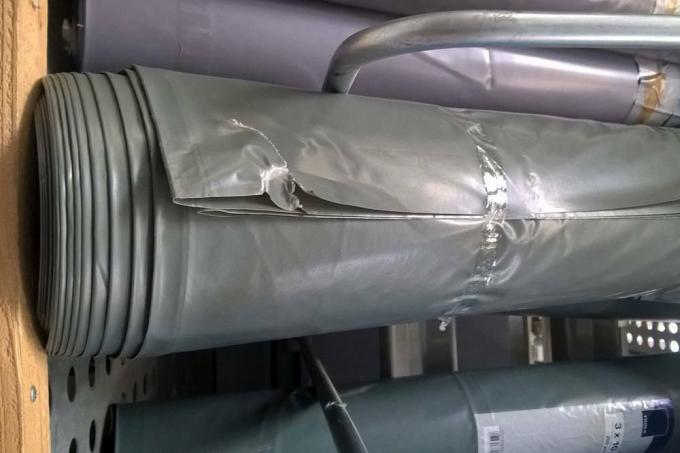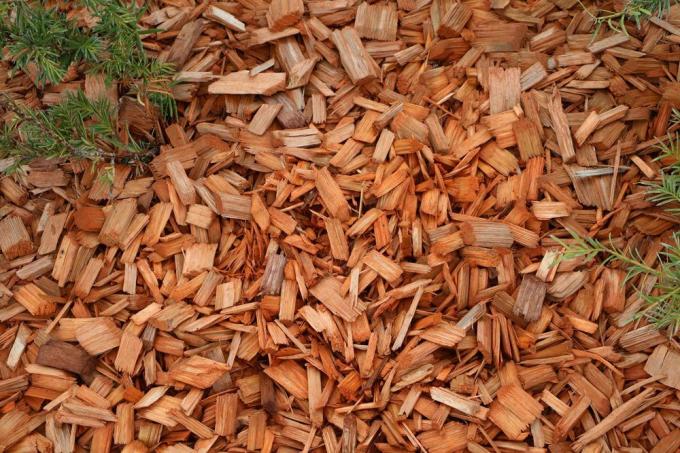
table of contents
- Remove lawn
- Foils
- fleece
- Bark mulch
Every hobby gardener cherishes and cares for his own race like the apple of his eye. But there are always situations in which you want to achieve exactly the opposite. For a different use or just a new sowing, it makes sense to completely remove the existing lawn first. In order to achieve exactly that, a wide variety of techniques are circulating among gardening enthusiasts and do-it-yourselfers. The best known among them are the use of foil, fleece and bark mulch. But do they really work?
Remove lawn
Of course, there are innumerable different techniques for removing weed. Most of them help but are not very popular for a variety of reasons. They are either only moderately effective or involve a high level of technical effort. In addition, many hobby gardeners want to forego chemical substances in their own garden because they fear effects on other plants obtained there. Finally, the most common techniques are the use of:
- foil
- fleece
- Mulch from tree bark
All three variants remove turf using the same approaches:
- Withdrawal.
- light
- humidity
- oxygen
- Increase in temperature to support dehydration
Using this method does not actively kill the lawn area. Instead, the livelihoods are withdrawn from him, so that he dies by himself. First and foremost, this procedure takes time. It is all the more important that it is actually effective. Resistant grasses usually remedy an inadequate supply in a single area with alternative solutions. As a result, simply withdrawing light or water or air is not enough. Instead, a combination of all three factors can effectively help with the elimination.
One should assume that the choice of material is ultimately irrelevant. However, they differ significantly in some respects, so it is worth taking a closer look at your actual suitability.
Foils
Whether as a real garden film or a universal multi-purpose tarpaulin, films are known to almost everyone. Made from different plastics, foils are all completely airtight and watertight. Depending on the material and color or transparency, a film also partially or completely retains light. When used to remove grass, it is laid out flat over the entire lawn and weighted down with stones, boards or the like.
- Material: various plastics such as polyethylene (PE), polypropylene (PP) or polyvinyl chloride (PVC) as a homogeneous composite, sometimes with fiber reinforcement for material reinforcement
- Properties: airtight, waterproof, colored mostly strongly to completely opaque
- Effectiveness:
- Air extraction:
- Withdrawal of light: depending on the nature of the film, moderate to very good
- Dehydration: very good
- Temperature rise: very well given due to airtightness and heating as a result of exposure to sunlight

tip: Do not fall back on the very cheap, but also extremely thin cover films from painters' supplies for foils. They tear down very quickly and let water and air on the turf. In addition, they are not light-tight, so that the death of the grass plants is significantly hindered. Instead, choose robust and completely opaque multi-purpose films, such as fabric tarpaulins or construction films.
Conclusion
If the right foil is chosen, it is very suitable for removing lawns without chemical agents or laborious digging. Since all essential growth factors are withdrawn from the grass, the film should lead to the goal comparatively quickly.
fleece
Common nonwovens for horticulture consist of a heterogeneous weave of plastic fibers. Depending on the orientation of the material, it is more or less permeable to air and moisture. The light permeability, on the other hand, depends heavily on the material thickness and the fiber density. The use of non-woven fabrics is analogous to foils in strips or predefined pieces and must be supplemented by a weighting against swimming away in rain and wind suction.
- Material: comparable to foils
- Properties: air-permeable, water-permeable, moderately to very good opaque, mostly heat-insulating properties due to fiber composite
- Effectiveness:
- Withdrawal of air: mostly given only moderately due to the structure of the tissue
- Light deprivation: moderate to very good, strongly dependent on the type of fleece
- Dehydration: only slight due to water permeability
- Temperature rise: good warming of the soil and lawn due to the insulating effect of the fleece materials

Conclusion
Since the removal of moisture and air through fleeces is not at all successful or at most moderately successful, the removal of light as the basis of life is of the greatest importance. If non-woven materials are to help remove lawns, they must therefore be as opaque as possible. However, even then, a relatively long waiting time must be expected before success. Because with little light, the plants are able to maintain the basic functions of life for a long time.
Attention: The worse a fleece fulfills the required tasks, the faster the sense of its use changes. In extreme cases, the additional heat can even initially improve the growth of the lawn. If water and light are at least minimal, the heat generated under the fleece can trigger an additional growth spurt in the lawn.
Bark mulch
In contrast to the previous materials, the use of bark mulch relies on a natural material that is also used elsewhere in the garden. As it is Bulk material is, the effort for the extensive application of a continuous, covering layer on the lawn is significantly higher. Removal after the end of the mission also requires a lot more time and material.
- Material: crushed bark from coniferous or deciduous trees
- Properties: The bark material itself is light and airtight, absorbs and releases moisture, properties of the actual However, the material used to remove the lawn is not very informative, instead the overall effect of the poured surface layer relevant
- Effectiveness:
- Air extraction: if the layer is sufficiently thick, it is moderate, can only be described as good if the layer is very thick, more than 5-8 centimeters
- Light deprivation: good from a layer thickness of around 5 centimeters
- Withdrawal of moisture: not given, as bark mulch regulates moisture, i.e. it absorbs and releases water
- Temperature rise: very good due to the insulating effect

Conclusion
If you want to remove lawns from tree bark with mulch, you have to accept a lot of effort. This is because the material obtained from natural raw materials only works at high application strengths. Underneath, the individual pieces, often up to several centimeters in size, create large gaps. Through this the supply of water and light is still given. But even with an intensive application of the bark mulch, the complete closure of air will hardly be possible. While light can be excluded very well, the bark material is initially even conducive to moisture supply. Because it absorbs water and releases it again with a time delay so that the lawn benefits from it for a long time. Finally, the bark can even serve as a supplier of nutrients through decomposition processes, which is also not conducive to lawn removal. Overall, bark mulch can be used effectively, but should be applied in large quantities and left there for a long time.
